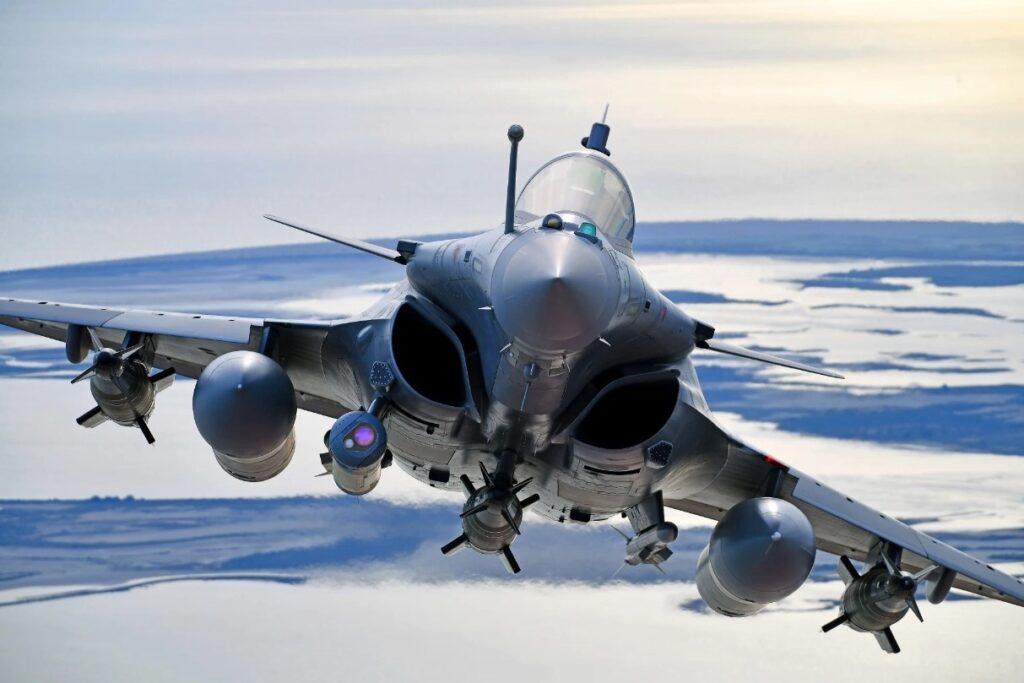SOURCE: AFI


In December 2021, the United Arab Emirates (UAE) signed a landmark $18 billion deal with France’s Dassault Aviation for 80 Rafale F4 fighter jets, marking the largest export order for the multirole aircraft to date. This deal, which also included 12 H225M Caracal helicopters, has sparked discussions about the potential for a “Made in India” Rafale F4 program, particularly as India seeks to bolster its air force and naval aviation under the Atmanirbhar Bharat initiative. Drawing on the UAE contract as a benchmark, this article estimates the cost and implications of producing Rafale F4 jets domestically, factoring in India’s unique requirements and industrial capabilities.
The UAE’s $18 billion contract covers 80 Rafale F4 aircraft, comprehensive support packages, logistics, training, spare parts, and weapons systems integration, with deliveries slated to begin in 2027. Breaking down the deal, the cost per aircraft is approximately $225 million, though this includes non-airframe expenses like munitions and maintenance infrastructure. The Rafale F4 variant??, the cost of munitions and support packages is assumed to be a significant portion, potentially 30-40% of the total deal value, based on industry standards for similar contracts. Adjusting for these, the flyaway cost per Rafale F4 is likely closer to $140-160 million.
Made-in-India Rafale F4: Cost Considerations
Producing Rafale F4 jets in India would involve a partnership with Dassault Aviation and an Indian firm, likely Hindustan Aeronautics Limited (HAL) or a private player like Reliance Defence, similar to the Dassault Reliance Aerospace Limited (DRAL) joint venture for India’s earlier Rafale deal. Several factors would influence the cost of a Made-in-India program:
- Economies of Scale: The UAE’s order of 80 aircraft benefits from economies of scale, reducing per-unit costs. For India to achieve comparable pricing, a sizable order—potentially 100-126 jets, as speculated for the Multi-Role Fighter Aircraft (MRFA) requirement—would be necessary. A smaller batch would increase costs due to lower production efficiency.
- Local Manufacturing Savings: Producing in India could lower labor and facility costs compared to France. HAL’s experience with licensed production of aircraft like the Su-30 MKI suggests savings of 10-20% on assembly and integration. However, critical components—engines, avionics, and radars—would still be imported, limiting overall savings to perhaps 15-25% below French production costs.
- Technology Transfer and Setup Costs: The UAE deal does not include significant technology transfer, whereas India would demand extensive know-how for local production, as seen in the 2012 MMRCA competition. Setting up a production line, training personnel, and licensing fees could add $2-3 billion upfront, amortized over the production run. For 100 jets, this translates to an additional $20-30 million per aircraft.
- India-Specific Enhancements: India’s 36 Rafale jets, delivered by 2022, included customizations like Israeli helmet-mounted displays and enhanced weapons packages, adding €1.8 billion ($2 billion) to the €7.87 billion deal. A Rafale F4 for India would likely require similar or advanced upgrades (e.g., integration with indigenous systems like Astra missiles), potentially costing $15-20 million per jet.
- Offset Obligations: The UAE deal has minimal offset requirements, but India’s Defence Procurement Procedure mandates 30-50% reinvestment into Indian industry. For a $18 billion deal, this could mean $5.4-9 billion in local contracts, inflating costs as Dassault partners with Indian firms to meet these obligations.
Using the UAE deal as a reference, a Made-in-India Rafale F4 program for 100 aircraft might break down as follows:
- Base Flyaway Cost: $140 million per jet (adjusted UAE estimate) × 100 = $14 billion.
- India-Specific Enhancements: $15 million per jet × 100 = $1.5 billion.
- Production Setup and Tech Transfer: $2.5 billion (amortized over 100 jets = $25 million per jet).
- Offset-Driven Cost Increase: Assuming 10% cost inflation to meet offset requirements, add $1.4 billion.
- Support and Logistics: Estimating 20% of airframe cost (based on UAE’s comprehensive package), add $3 billion.
This figure aligns with posts on X estimating the MRFA program at $15-40 billion, though such estimates often include lifecycle costs or exaggerated inflation by French negotiators. For comparison, India’s 2016 deal for 36 Rafales cost $101 million per jet (2024-adjusted: $122 million), but these were flyaway units without local production overheads.
NOTE: AFI is a proud outsourced content creator partner of IDRW.ORG. All content created by AFI is the sole property of AFI and is protected by copyright. AFI takes copyright infringement seriously and will pursue all legal options available to protect its content.